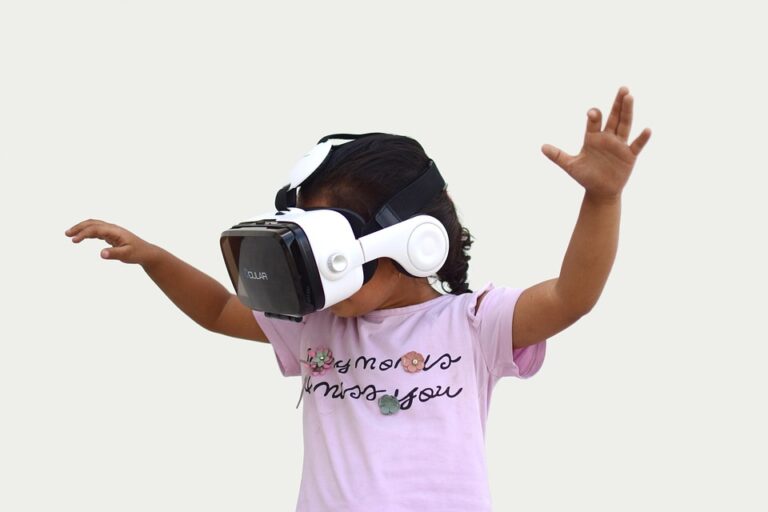Enhancing Reality: The Transformative Power of Augmented Reality in Everyday Life
The digital age has ushered in a new frontier of technology, and among its highlights is Augmented Reality (AR). This innovative medium combines digital information with the physical world, creating an enriched experience that blurs the lines between reality and the virtual. As AR technology evolves, it is making significant inroads into various aspects of everyday life, from education and healthcare to entertainment and retail.
Understanding Augmented Reality
Augmented Reality involves overlaying digital content—such as images, sounds, and other sensory stimuli—onto the physical environment. Unlike Virtual Reality (VR), which creates a fully immersive experience, AR enhances an existing environment by adding valuable information. This hybrid experience is made possible by devices like smartphones, tablets, and specialized AR glasses.
The Rise of Augmented Reality
According to recent industry reports, the AR market is projected to reach $198 billion by 2025, showcasing an exponential growth rate. Factors contributing to this momentum include advancements in smartphone technology, increasing consumer interest, and ongoing developments in software capabilities.
With over 70% of consumers expressing a desire to use AR for various tasks—such as home design, interactive learning, and enhanced shopping experiences—the demand is clear. In particular, retail stakeholders recognize that offering augmented experiences can lead to improved customer engagement and conversion rates.
Applications of Augmented Reality in Everyday Life
1. Education and Learning
AR has started to revolutionize education, providing an interactive learning experience. For instance, apps like Google Expeditions allow students to explore 3D models of the solar system or ancient monuments right in their classrooms. This immersive approach to learning enhances retention and engagement, making complex subjects more accessible.
2. Retail Innovations
Imagine wanting to buy a new sofa but being unsure how it will look in your living room. AR applications like IKEA Place let customers visualize how furniture fits within their existing space before making a purchase. This straightforward approach not only increases customer satisfaction but also reduces the rate of returns, as consumers can make more informed decisions.
3. Enhancing Healthcare
In the medical field, AR is transforming patient care and clinician training. For instance, mixed-reality systems, such as Microsoft’s HoloLens, are being used for surgical planning and assistance during operations. Surgeons can overlay vital patient information, making real-time decisions that can drastically enhance outcomes.
4. Interactive Tourism
Tourists can use AR applications to enrich their experiences. For example, apps like Augmently allow travelers to point their devices at landmarks to receive historical context and additional visuals, making exploration more informative and engaging.
The Future of Augmented Reality
The potential of Augmented Reality is vast and continues to grow. As 5G technology rolls out, the capabilities of AR applications will expand, enabling faster data transfer and real-time interactivity. Consider the implications for industries like architecture, where professionals may walk through a 3D model of a building before ground is broken.
Key Statistics to Note
- 63% of consumers say they would be more inclined to shop at retailers that offer AR experiences.
- A 2021 survey found that 58% of retailers plan to adopt AR technologies to enhance the customer experience by the end of the year.
Challenges and Considerations
Despite its many advantages, the adoption of AR comes with challenges. Data privacy, user experience design, and the need for significant infrastructure investments can impede its progress. Therefore, stakeholders must navigate these complexities while delivering effective and engaging experiences.
Conclusion
Augmented Reality is not just a passing trend; it is a transformative power that is redefining how we interact with the world around us. As technology continues to advance, its influence will undoubtedly expand across multiple sectors, reshaping our everyday lives for the better.
For those eager to explore the relationship between technology and daily life, articles like The Future of Smart Homes and The Impact of AI on Our Daily Lives provide valuable insights into the technological trends shaping our futures. Furthermore, for more detailed insights into AR, consider visiting TechCrunch and The Verge.
Images for the Article:
- Image of a smartphone displaying AR furniture application (alt text: "Augmented Reality in home design")
- Image of students interacting with AR educational tools (alt text: "Augmented Reality enhances classroom experiences")
By embracing and utilizing Augmented Reality, we are taking definitive steps towards a more interactive and enriched future.


